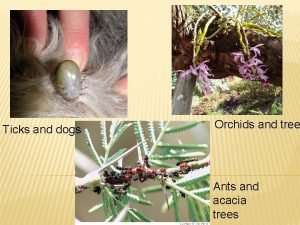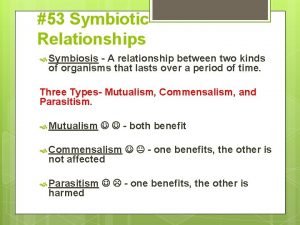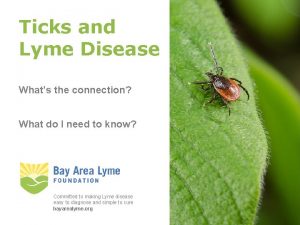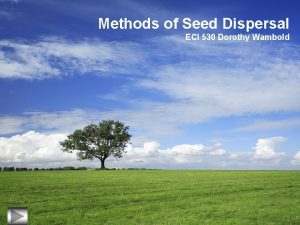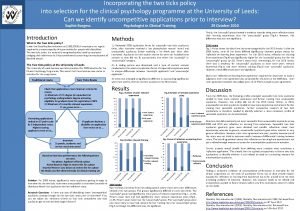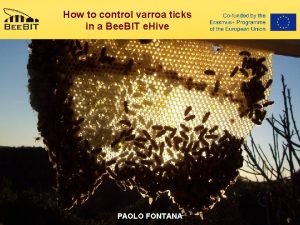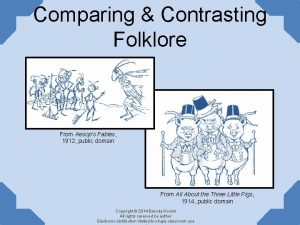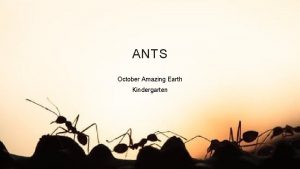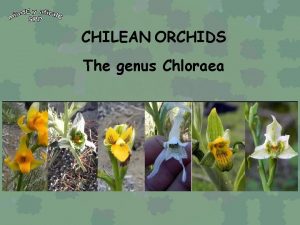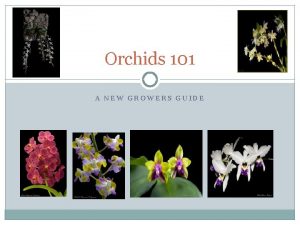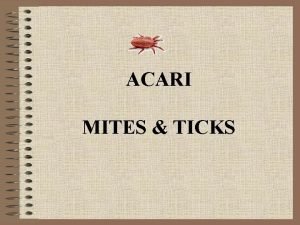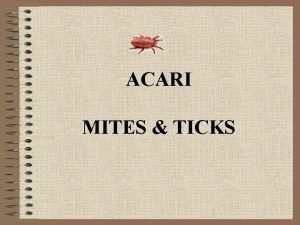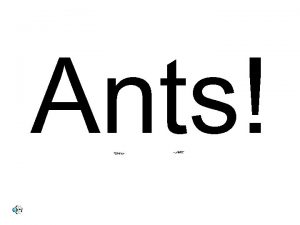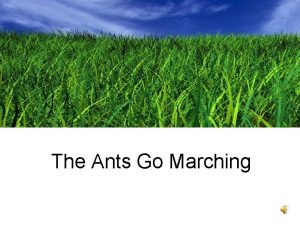Ticks and dogs Orchids and tree Ants and














- Slides: 14

Ticks and dogs Orchids and tree Ants and acacia trees

Take out your journals and copy down the “I Can” statement for #6 in your Electronic Journals. SYMBIOSIS Ecology Unit Chapter 2

SYMBIOSIS � What is symbiosis? �Close and dependent relationship between organisms of different species. � Three 1. 2. 3. types of symbiotic relationships: Mutualism Commensalism Parasitism

MUTUALISM � Both species benefit + + relationship � Example: �Ants and acacia trees: �Ants benefit from the tree’s nectar �Tree benefits from the ants’ protection

COMMENSALISM � One species benefits and the other species is not harmed or benefited �+ , 0 � relationship � Example: � Orchid and tree: � Orchid benefits from habitat in tree � Tree is not affected

HABITAT AND NICHE � Habitat = place where an organism lives out it’s life. � Niche = role or position a species has in it’s environment (or habitat). Includes all interactions both abiotic and biotic. � Example from previous slide = The niche of the tree is to provide habitat to the orchid. But the tree may also provide such things as food and shade.

PARASITISM � One species benefits and the other species is harmed � + - relationship � Example: � Tick and dog: �Tick benefits from food (blood) in the dog �Dog is harmed from irritation and

SYMBIOTIC RELATIONSHIP? 1. Mutualism 2. Commensalism 3. Parasitism

SYMBIOTIC RELATIONSHIP? 1. Mutualism 2. Commensalism 3. Parasitism

SYMBIOTIC RELATIONSHIP? 1. Mutualism 2. Commensalism 3. Parasitism

SYMBIOTIC RELATIONSHIP? 1. Mutualism 2. Commensalism 3. Parasitism

SYMBIOTIC RELATIONSHIP? 1. Mutualism 2. Commensalism 3. Parasitism

WHY DO ORGANISMS LIVE IN SYMBIOTIC RELATIONSHIPS? � For food � Resources � Habitat � Protection � Transportation � Cleaning http: //www. morning-earth. org/Graphic-E/Interliv-Two. html

� � � http: //www. youtube. com/watch? v=ux. VMe. LWz. B_o http: //www. youtube. com/watch? v=x. Nm 7 dg 3 Biy. U&feature=related http: //www. youtube. com/watch? feature=player_profilepage&v=tnv b. VIc. ZZHc http: //www. youtube. com/watch? v=v. MGLWy. Nc. As&feature=related http: //www. youtube. com/watch? v=w. Xq. K 5 Qulb. J 8&feature=BFa&li st=PLF 0 BFBE 269796 D 013&lf=rellist http: //www. youtube. com/watch? v=0 ow. HFW_fr. TE&feature=BFa&li st=PLF 0 BFBE 269796 D 013&lf=rellist
 Ticks and dogs relationship
Ticks and dogs relationship Spider crab and algae relationship
Spider crab and algae relationship Keeping orchids poem analysis
Keeping orchids poem analysis Gap year jackie kay
Gap year jackie kay Keeping orchids jackie kay analysis
Keeping orchids jackie kay analysis Ticks in california map
Ticks in california map Method of dispersal
Method of dispersal Ticks life cycle
Ticks life cycle Two ticks policy
Two ticks policy Queen bee cycle
Queen bee cycle Cudalink
Cudalink Signal two ticks
Signal two ticks Venn diagram
Venn diagram Ants at the olympics poem
Ants at the olympics poem Ako aasma
Ako aasma
